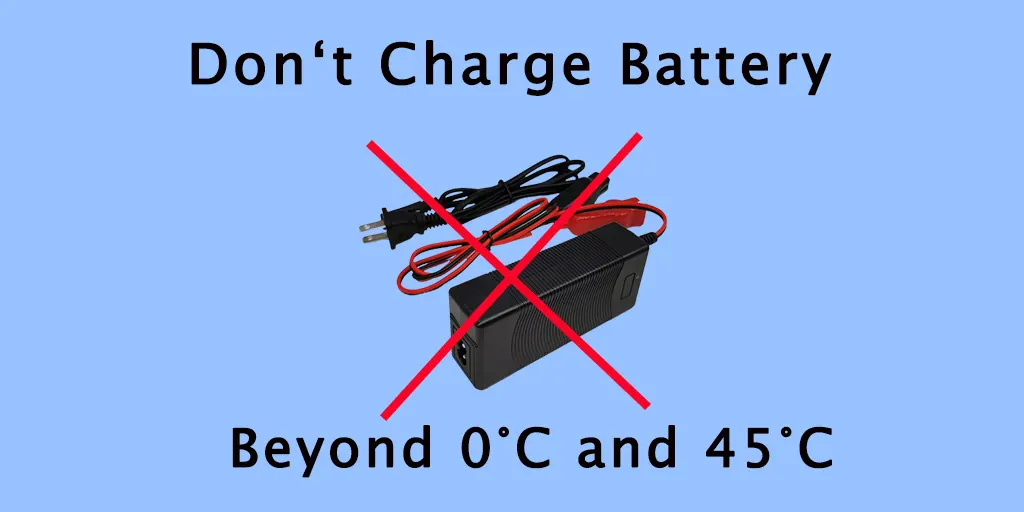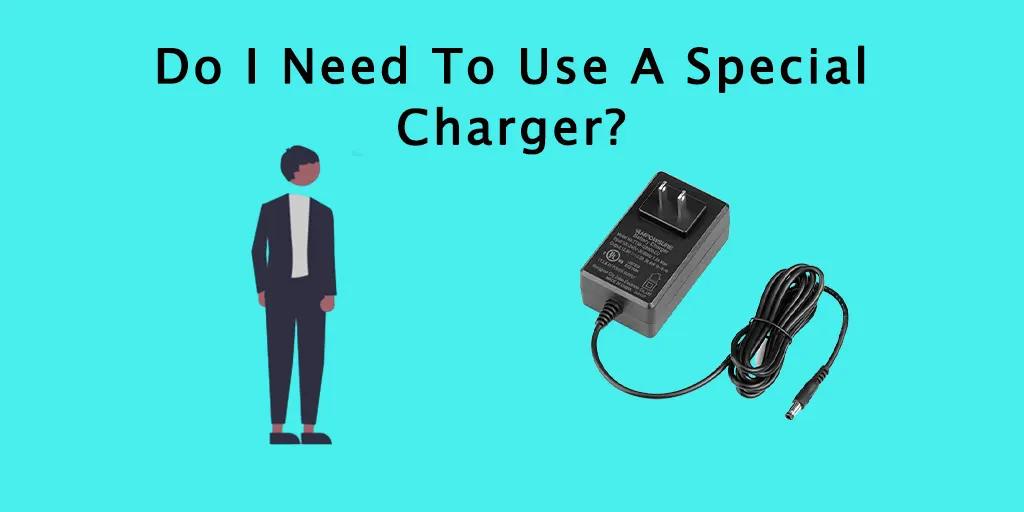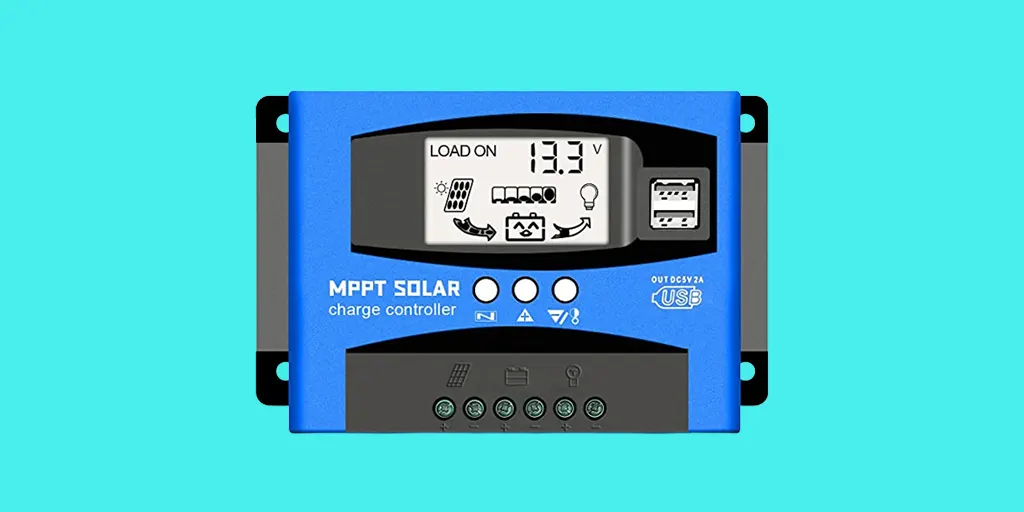Simply put, you have to charge LiFePO4 batteries with the specific charger that comes with it. Do not use chargers of other lithium battery chemistries, as they come with a higher voltage than the LiFePO4 battery requires.
LiFePO4 batteries are expensive. One of the first conditions to get a long life from these batteries is to charge them properly.
Even if you are just storing LiFePO4 without using it, you need to charge 100%.
But there are many factors you have to make sure working properly.
Factors to Check, Follow and Maintain While Charging your LiFePO4 Battery
Check Your Charger
Before charging your battery, ensure the charger is properly insulated and free of breakage. Clean the charger terminal and attach it correctly to your battery. It will ensure a good connection and maximum conductivity between the charger and your battery.
Charge When Needed
You need not charge your battery after every use if it’s not fully discharged. Leaving a LiFePO4 battery partial state of charge won’t damage it. You can charge your battery when it has been discharged up to 80% depth of discharge.
You can charge it while using the battery too.
Proper testing of the charge capacity of LiFePO4 will give you a good understanding of whether you need charging or not.
If you have a BMS, then use it for charging multiple batteries at once. Also, you can use either solar power to charge or an external power charger to charge your LiFePO4 batteries.
Maintain Proper Temperature
According to research in the Journal of Visualized Experiments, charging a LiFePO4 battery at 30°C and discharging at -5°C causes the highest degradation rate. It shows how important temperature is for LiFePO4 batteries. You should not charge your battery beyond 0°C and 45°C.

Revive Your Battery
If the BMS puts your battery into sleep mode because of low voltage, you have to remove all the loads and charge immediately. Only a lithium iron phosphate battery can wake up your LiFePO4 battery from sleep mode.
Is It Okay To Partially Charge LiFePO4 Battery?
You can partially charge a LiFePO4 battery without causing any damage. By charging a Lifep4 battery, you basically apply external voltage to drive current from the anode to the battery’s cathode.
When your charger’s applied voltage is higher than the open circuit of your battery, charging current flows from the charger to your battery and increases its voltage. In this process, your battery’s open circuit increases.
Unlike lead-acid batteries, LiFePO4 batteries have two charging steps. When lead-acid batteries are fully charged in two steps instead of turning off, the charger enters into a new stage called the Float stage, where it drops to a lower voltage and holds it; otherwise, your battery will discharge pretty fast.
But the LiFePO4 battery does not require float charging and completes in two stages. Plus, the discharge rate is lower than other batteries because of the chemistry and components inside. That’s why doing partial charges won’t affect a LiFePO4 battery’s health and life.
However, you must charge it as soon as its voltage drops down to 20% state of charge; otherwise, your battery will cross the cutoff voltage and enter into sleep mode.
Do I Need To Use A Special Charger?

Charging LiFePO4 batteries require many considerations. You have to charge them with a specific charger. These chargers generally come with your battery pack. Lithium Iron Phosphate batteries are programmed with proper voltage limits.
For example, to charge a 12-volt LiFePO4 battery, you need a charger with 14V to 14.6V. If you charge with a charger that has more or fewer volts, it will damage your battery. Besides, using other chargers can also hamper the chemical reaction inside the battery.
What Are The Best Ways To Charge a LiFePO4 Battery?
There are two ways you can charge your LiFePO4 battery; either charge it with a solar panel or use a Lithium Iron Phosphate charger. Either way, you have ensured everything is placed correctly.
Charging With Solar Panel

You can use solar panels to charge a LiFePO4 battery with any charging equipment as long as it complies with the voltage requirements. But you should use an MPPT charge controller as it’s more efficient than a PWM controller.
Charging With A Charger
Another way to charge your LiFePO4 battery is with a charger. If you have a large battery volt, then there are two ways you can add the batteries to a circuit. You can either use a parallel circuit or a series circuit.
In order to maintain the balance between batteries in parallel series, each battery should be within 0.1V of the other before using them. In the case of the series circuit, each battery should be within 50 mV before going into service.
The following table shows charging parameter requirements for each system voltage in a parallel circuit.
| Battery Voltage | Charging Parameters |
| 12V | 14V to 14.2V |
| 24V | 28V to 28.4V |
| 36V | 42V to 42.6V |
| 48V | 56V to 56.8V |
Can You Trickle Charge A LiFePO4 Battery?
Trickle charging is a particular current forced into your battery even when it’s full. It does not apply to LiFePO4 batteries. That’s why you should not trickle charge your LiFePO4 battery, for it will count as overcharging.
Trickle charge is used for batteries like lead-acid, NiCad, NiMH, etc. It keeps the batteries topped off and prevents drastic discharge. Lithium battery chemistry does not accept trickle charges because it overcharges your battery and eventually can cause permanent damage.

Eng. Matthew Joseph Nandirio is the Founder of walkingsolar.
After graduating from the University of Houston in 2002, matt started working as a Solar Electrical Engineer for several multi-national solar energy companies.
He has a wide range of experiences including solar system requirement analysis, planning, maintaining, debugging and even solar device development through research.
He now shares his 20 years of expertise through his articles on the walkingsolar website.
Further, he is also the author of two books on Solar Technology, “Solar Power for Villages” and “DIY Solar System for Dummies”.
